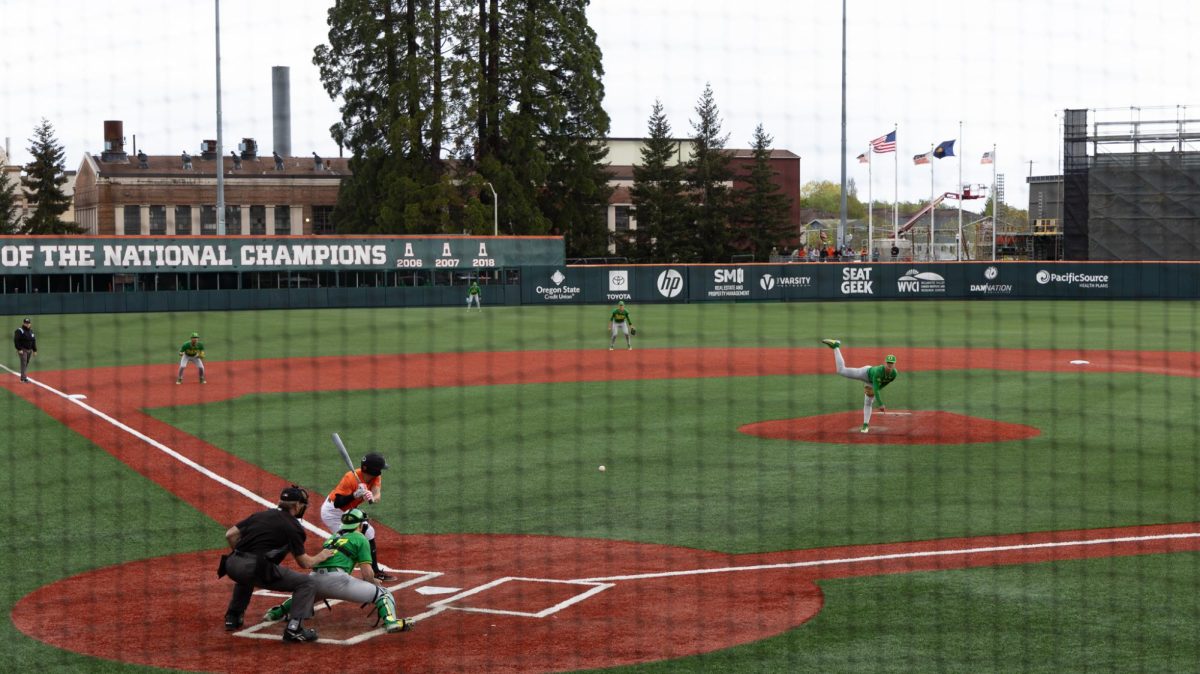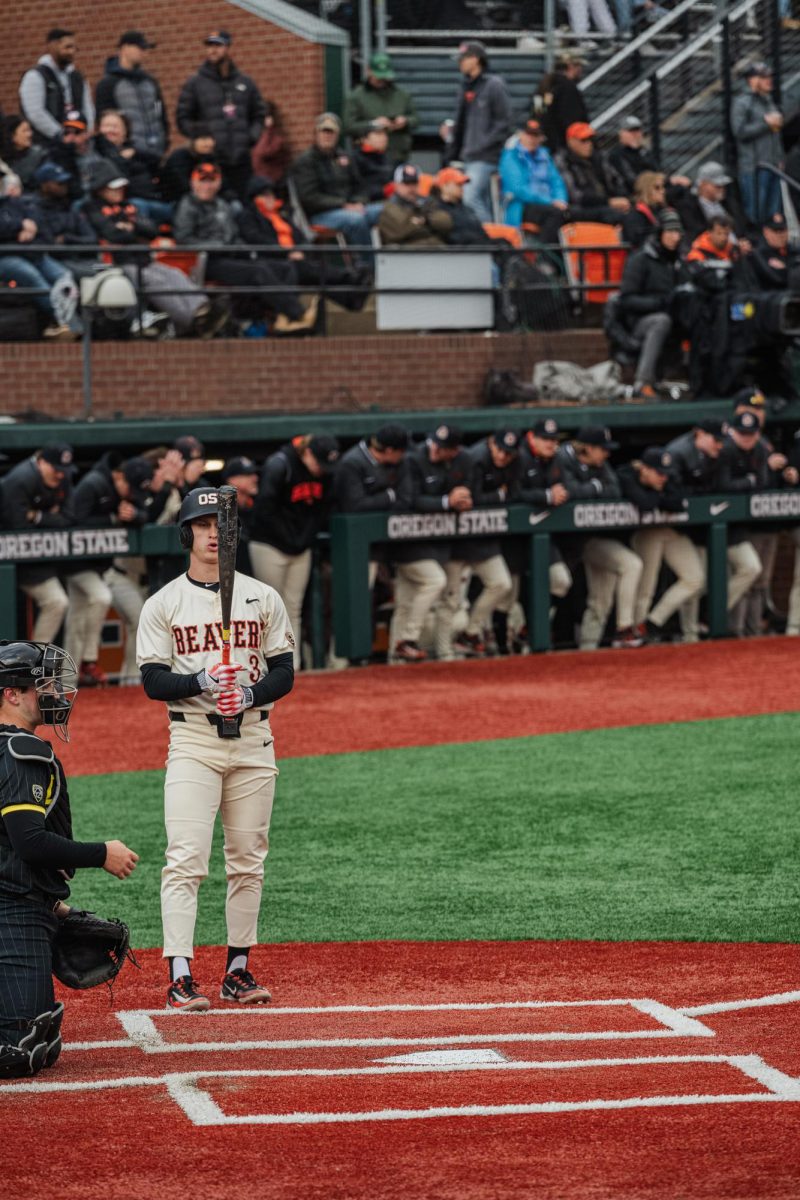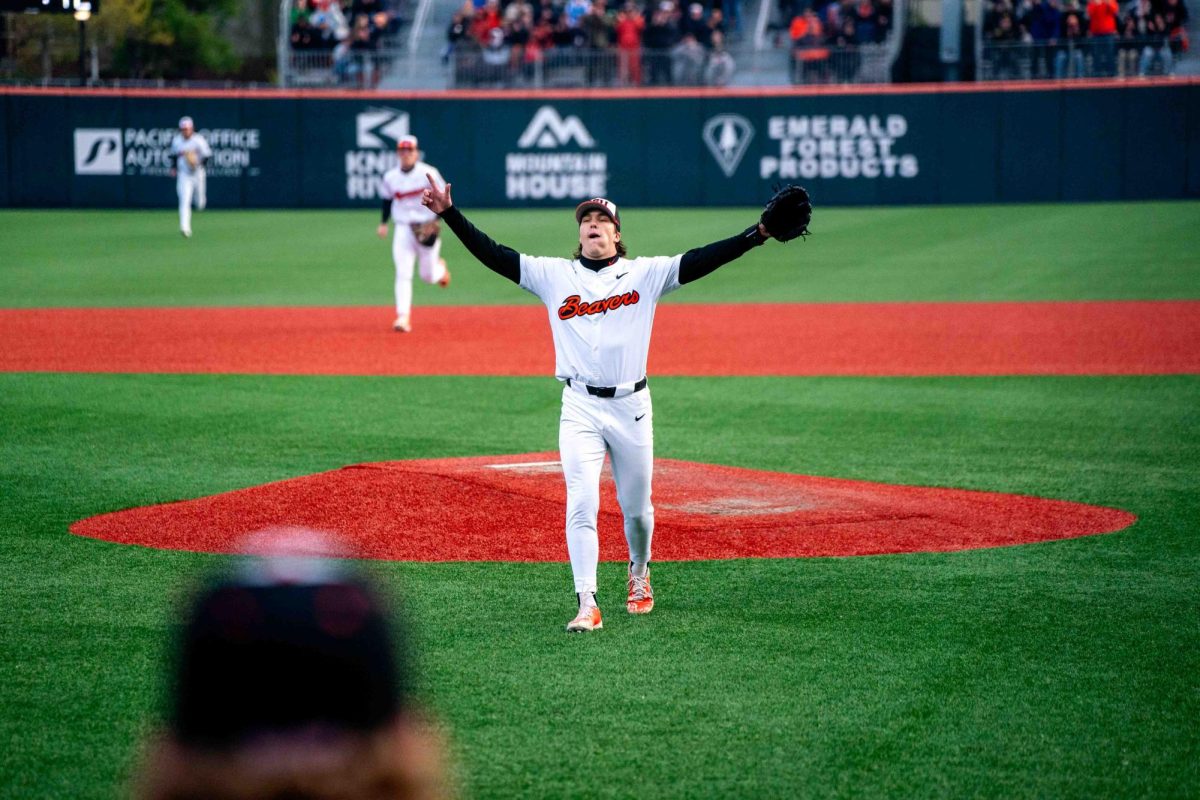Grand slam, pop fly, ground ball, squeeze play, and a home run.
If you only understood one or two of those phrases, bets are you’ve been to baseball games for the peanuts and cracker jacks, but never really understood the game itself.
Here we are going to ditch the days of googling while watching – which I myself am certainly guilty of – and break down the basics to get you caught up to speed on the essentials of understanding baseball.
The main objective is to get the most runs, meaning players run through first, second, third, and eventually home base at the end of nine rounds, technically called innings.
The game is made up of nine active players on the offense, those batting and running through bases, and nine defense players, including the pitcher, who are out in the field trying to tag out the offense before they reach a base.
Despite this seemingly simple nine versus nine-player game, according to Corvallis Knights Coach Brooke Knight, there are typically 27 to 30 players in total on a team with half of them being designated pitchers.
According to Knight, when teams switch from defense to offense the pitcher will sit out and a designated hitter will take their place on the batting lineup. So essentially every player who is not a pitcher is a position player on the defense, and a batter when on the offense
“It looks like it’s a slow-moving game sometimes and kind of a quieter sport when in reality, there’s a lot going on and it’s probably more intense than the novice fan might understand or realize,” said Corvallis Knights coach Brooke Knight.
One simple but baffling question I always had about baseball was on what terms the batters switch, was it when their arms got tired or their coach called them in? Luckily for me, Knight explained the technicalities of when players and teams switch places.
According to Knight, batters stay until either three strikes, four balls, or obviously the most ideal, the ball is hit into play. If a player is replaced, essentially sent to the bench during a college game, typically an offensive player, they are out for the rest of the game.
“If they (the pitcher) throw it and it hits the batter, that’s called a hit by pitch,” Knight said. “So that’s an automatic free pass to first base.”
Players switch from offense to defense or vice versa halfway through the inning defined by the defensive team getting three outs. A quick trick I’ve used to simplify when teams switch is by the top half and bottom half of the inning. The top half is when the home team will bat in the offense, and the bottom half is when the away team will have a chance to score.
While baseball is most known in some ways for the screaming “SAFE”, Knight explains what actually qualifies as a safe and what qualifies as an out.
“When a hitter puts the ball in play, if it’s caught in the air, it’s an out and if it’s hit on the ground, then the objective is to throw the ball to the first baseman before the batter-runner arrives at first,” Knight said. “So that would mean they’re out, if the batter-runner gets to first base before the ball reaches first base, then they’re safe.”
Knight also notes that while the ball is in play, meaning has been hit and has not reached a base via the defensive players yet, then players who are currently on another base are free to run to the next.
Even though I myself grew up going to Seattle Mariners games and watching my grandpa’s favorite player, Ichiro Suzuki, I never understood what separated a good game from a mediocre one.
Knight said that there are a couple of key things that viewers can look for distinguishing the good from the average. One is the classic home run where a batter hits the ball over the fence allowing for all players on a base – including the batter himself – to score a run, and of course a close scoring game between the two teams.
“Generally there’s some key hits and some quality pitching where they’re throwing a lot of strikes,” Knight said. “Then some, you know, maybe a great defensive player too, where a guy has to dive to make a catch or you know, has to field a ground ball and make a tough play on the run.”
Some common plays and terminology that any viewer should know and expect to see in a game include; a pop fly, meaning whenever a ball is hit into the air, and the opposite. When the ball is hit and lands on the ground it becomes a ground ball.
Knight also explains a couple of notable plays that every fan should be able to spot including what is known as a squeeze play.
“You had a runner at third base so they’re close to home… and the pitcher throws the ball and the batter bunts the ball instead of swings at it, [ bunting the ball means that the ball is just tapped with the bat so it intentionally does not fly into the outfield] At the same time, the runner from third is running home, so that’s called a squeeze play,“ Knight said.
While I will watch baseball for the nostalgia of childhood memories and the joy of being with friends, Knight had a different take on what makes the sport interesting and worth watching.
“It’s a challenging sport because players do experience a lot of failure,” Knight said. “… And it’s not like a lot of sports, it’s kind of an individual sport, played on a collective team.”
The best piece of advice Knight offers those new to watching the sport is to pay attention to the players on the bases and to give the sport a chance.
“It’s a sport that the more you understand it, the more joy you will have in watching the sport,” Knight said.














































































































